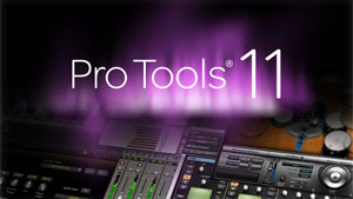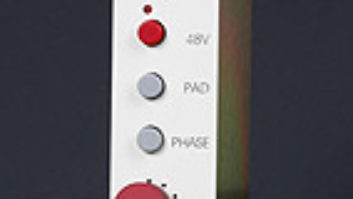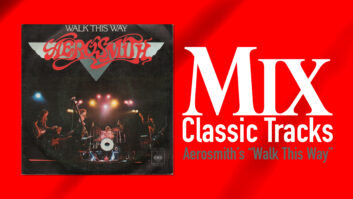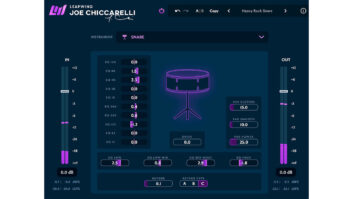
Is there an engineer out there who doesn’t love the old Pultec EQs? I think it’s safe to say we all have a Pultec on our wish lists. The two factors that keep us from owning a few is that they are hard to come by, and if you do find one, it will cost you an arm and a leg. Despair no longer. Liam Carter at Cartec has set out to re-create the vintage Pultec magic—and he succeeded.
The Old
Cartec has been around only three short years and has released three high-end analog hardware units. The company’s two 500 Series units are the Fe-Q5, an inductor-based EQ; the PRE-Q5, a preamp/EQ combo; and the rackmounted EQP-1A tested here.
The original EQP-1A was developed in the early 1950s by Eugene Shank and Ollie Summerland from Pulse Technologies in New Jersey. Eugene and Ollie both built their units by hand, and when the company sadly closed its doors in the ’70s, the Pultec EQ became one of the most desired EQs in the world. The Pultec EQP-1A is a passive valve mono unit, and its main characteristics are its smooth tone and the possibility to simultaneously boost and cut the same frequency. Over the years there have been quite a few great hardware versions, and of course there are various software emulations on the market as well.
You could easily ask yourself: “Why invest in one hardware unit if I can just spend a couple of hundred bucks and have a plug-in I can use all over the session?” In our world of mixing in the box, there’s always the choice to go with hardware or software. If you’re working completely in the box and you don’t want to be troubled by recall issues, the solution is pretty clear: plug-ins. If, on the other hand, you like to get your hands on real controls and feel the unit react to the signal, hardware is the way to go. Whatever the scenario, getting your hands on one of the Cartecs will make up your mind for you.
The New
Like its predecessor, the Cartec EQP-1A has a valve gain stage and valve power rectification stage, giving the unit the classic “compression” sound due to the PSU sag. The inputs and outputs are transformer-balanced, and all the wiring is point-to-point (no circuit boards inside, people).
The custom-made transformers have been hand-wound, and the switches and pots are military-grade Grayhill and PEC models. The green front panel with the warm yellow etching makes the unit very easy on the eyes. This color combo allows you to see the frequencies, bandwidth and boost/attenuate amounts easily, even under cozy studio lighting. It’s refreshing to see that Liam didn’t yield to the temptation to add extra features; he’s stayed true to the original design. Everything you expect to see on the front panel is there: LF range from 20-100 CPS, HF range from 3-16 KPS, Boost and Attenuation from 0-10, sharp to broad bandwidth, the Atten selector 5-10-20, bypass switch, On/Off selector, and a cool bright light.
In the Studio
I first used the EQP-1A in recording an album for a Belarusian singer. This was the perfect time and opportunity to insert the Cartec into the signal chain and track a few vocals. I was already using a great microphone, Bees Neez Jade, and preamp, Focusrite Liquid Channel, so I was not expecting a massive change. I was amazed by the result. Switching the unit in, with all the frequencies flat, made a very audible and satisfying difference.
I guess many of us tend to get a little jaded about gear. Some manufacturers turn out new units like software developers release upgrades. And all of us end users are struggling to keep up because, let’s face it, we’re gear sluts and our clients expect us to run the latest gear available. That’s why it’s exciting when a piece of equipment comes along that makes such a difference in recording, mixing and mastering situations.
We already established that the EQP-1A in flat mode smooths out the sound. It warms up the signal chain and has that “going-to-tape”-like quality. Clicking through the frequencies you discover that it behaves exactly like an old Pultec. The 30-60 CPS range for kick drums, 100 for bass or warming up thin vocals, the 3-8 KPS for bringing out vocals in the mix, sparkling up guitars, and 10-16 KPS for air.
Our vocal session that day was on the taxing side to say the least. We were dealing with a particularly tricky vocal part we’d abandoned the night before, in a difficult area of the singer’s range. Because it was a fresh start, I decided to sling the EQP-1A into the chain to see if I could add something to get everyone excited. Not only did the producer raise his eyebrows, but the singer also noticed the change in sound immediately, and the vibe in both the control room and the vocal booth improved, and we managed to record a very cool vocal performance in no time. The unit remained in the signal chain for the next day and all the backing vocals went down the same route.
Killer EQ Reprise
Unfortunately I had the Cartec for only a very short time. As I’d had the chance to use it only on vocals, I felt I hadn’t had the opportunity to properly put it through its paces. The unit I used for this particular vocal session had to go pretty swiftly as it was sold to a client. Liam Carter and Kevin Walker at Cartec kindly arranged a brand new box for me to use a little longer.
I’m currently producing a record for Gallows Ghost, so it was the perfect time for more tube action. This is a grunge/folk act, and we’re going for an old-school organic sound. I’ve now inserted the EQP-1A on acoustic guitars (Brauner Phantom V and sE Electronics RNR-1), more vocals (the Jade again) and bass (Brauner VM1 and a Rainbow 180 amp). Everything went through D.A.V. 501 lunchbox pre’s and again switching the Cartec into the circuit added so much weight, dimension and clarity.
After testing this second unit, the Cartec not only exhibited versatility—proving it has that “works on anything you throw at it” quality—but it also demonstrated that all these hand-wired boxes are consistent. You can rest assured that the unit you buy will sound exactly like the demo unit.
Impressive Operator
The Cartec is an impressive box to have in your rack—it looks great, it sounds even better and for the noise geeks out there, it has a really low noise floor. I don’t mind saying that I had to work twice as hard to get close to the Cartec vocal sound I had without it. You will quickly get used to having this unit in the signal path, and only once it’s gone will you realize how much you relied on it. I definitely want one! Arrange a demo, record through it, try it out on parts of your mixes, link two units across the mix bus, insert it over your final masters. You’re going to love it.
Wes Maebe is a UK-based recording, mixing, mastering and live-sound engineer. Follow Wes, his work and Sonic Cuisine studio shenanigans at facebook.com/SonicCuisine.
.
Try This
One of my favorite tricks is to put an EQP-1A on the kick. Depending on where it needs to live in the mix, I like to boost either 30 or 60 CPS a fair bit and simultaneously attenuate it to taste. If you find one of the original Pulse Technologies manuals, it will tell you: “Do not attempt to boost and attenuate simultaneously on the low frequencies.” Rules are there to be broken. Cutting at the same frequency creates a nice little dip just in front of the frequency you’re boosting. This way you’ll end up with a really ballsy bottom end without muddying up the sound.
Product Summary
COMPANY: Cartec
PRODUCT: EQP-1A Equalizer
WEBSITE:cartecaudio.com
PRICE: $2,895
PROS: Quality construction. Great-sounding unit.
CONS: May be too pricey for some.







